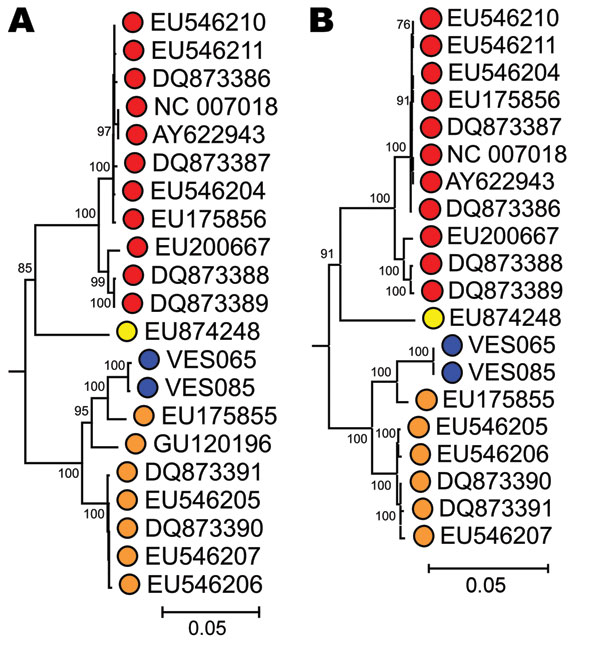Volume 17, Number 8—August 2011
Dispatch
Human Parvovirus 4 as Potential Cause of Encephalitis in Children, India
Figure

Figure. Phylogenetic analysis of (A) complete nonstructural (NS) and (B) viral protein (VP) 1/VP 2 gene sequences of human parvovirus 4 (PARV4) variants isolated from patients with encephalitis of unknown etiology using 167 available sequences from human PARV4 variants (genotypes 1–3). Blue, study sample; red, genotype 1; orange, genotype 2; yellow, genotype 3. The porcine hokovirus sequence (GenBank accession no. EU200671) was used as an outgroup (not shown). The trees were constructed by neighbor-joining of pairwise maximum-composite likelihood corrected distances between nucleotide sequences; bootstrap values ≈70% are shown. Scale bars represent an evolutionary distance of 0.05.
Page created: August 15, 2011
Page updated: August 15, 2011
Page reviewed: August 15, 2011
The conclusions, findings, and opinions expressed by authors contributing to this journal do not necessarily reflect the official position of the U.S. Department of Health and Human Services, the Public Health Service, the Centers for Disease Control and Prevention, or the authors' affiliated institutions. Use of trade names is for identification only and does not imply endorsement by any of the groups named above.